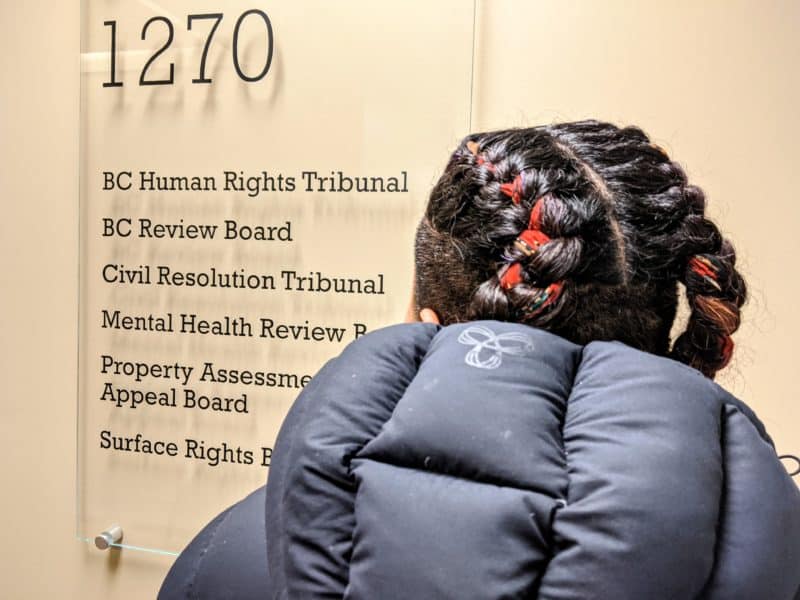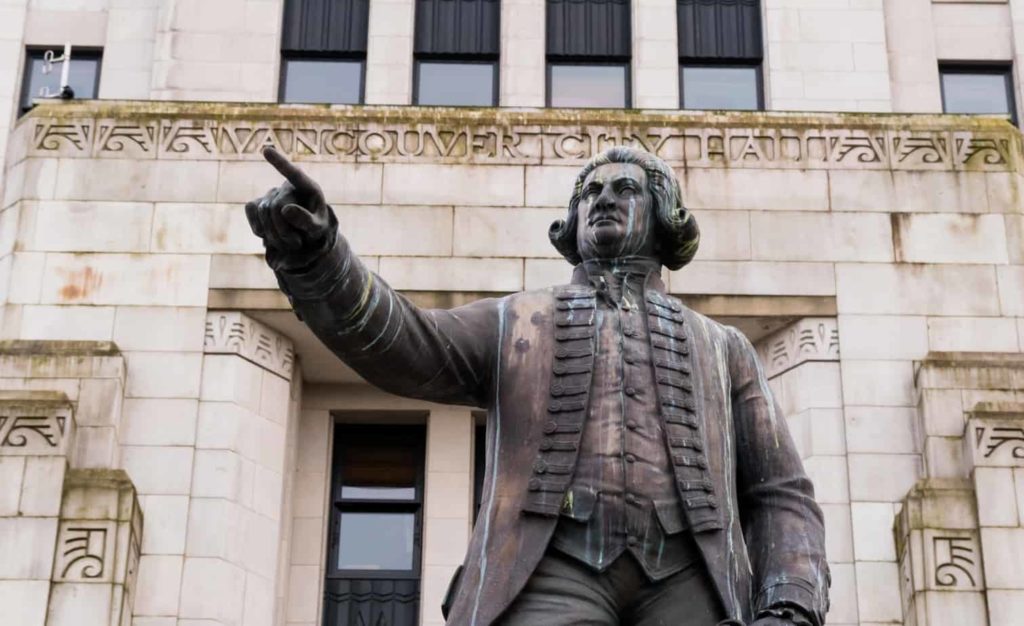
This is from our Urban Nation newsletter. You can subscribe here.
You chose and we listened: The state of reconciliation in the Lower Mainland’s urban institutions is the next theme that we will investigate for the Urban Nation here at The Discourse.
How well reconciliation measures are being implemented in urban institutions was one of five themes we put to you, our readers, to vote on between April 3 and 9. Thank you for sharing your thoughts during the months-long community interview process that helped us identify these themes, and for helping us select which theme matters most to you right now. Remember: you tell us what the news is; we don’t tell you.
The other themes included: Murdered and missing Indigenous women and girls — what, if anything, has changed for women at risk in the Lower Mainland since Robert Pickton’s incarceration and the national inquiry’s investigation? That theme came in second, so we’ll dig into it, too, later this fall.
We also asked you to vote on: housing waits, the affordability crisis and its impact on Indigenous people and families; the evolution of the urban Indigenous identity; and what it’s like to grow up as an urban Indigenous youth.
On the face of it, the state of reconciliation in urban institutions seemed a nebulous subject, and I was initially surprised that it was chosen over MMIWG. But after thinking about it more deeply, I understood why.
According to Statistics Canada, the Lower Mainland is home to more than 61,000 Indigenous people, and Vancouver has the third largest Indigenous population after Winnipeg and Edmonton.
From community centres and neighbourhood houses to post-secondary institutions and libraries, urban facilities of all sorts are apt to be present in Indigenous lives as social, cultural, sports, educational hubs and more for our families, especially as we gather in urban centres sometimes far from home.
But how accessible are these institutions to an often impoverished people, and how reflective are they of the Indigenous communities they’re meant to serve?
It’s been four years since the Truth and Reconciliation Commission’s calls to action were announced, which included calls to public institutions, including municipal governments, colleges, universities and other civic institutions. How well are these institutions answering the calls? We’ll start digging into the layers of these questions in the months to come.
Thanks for voting!
Red Women Rising
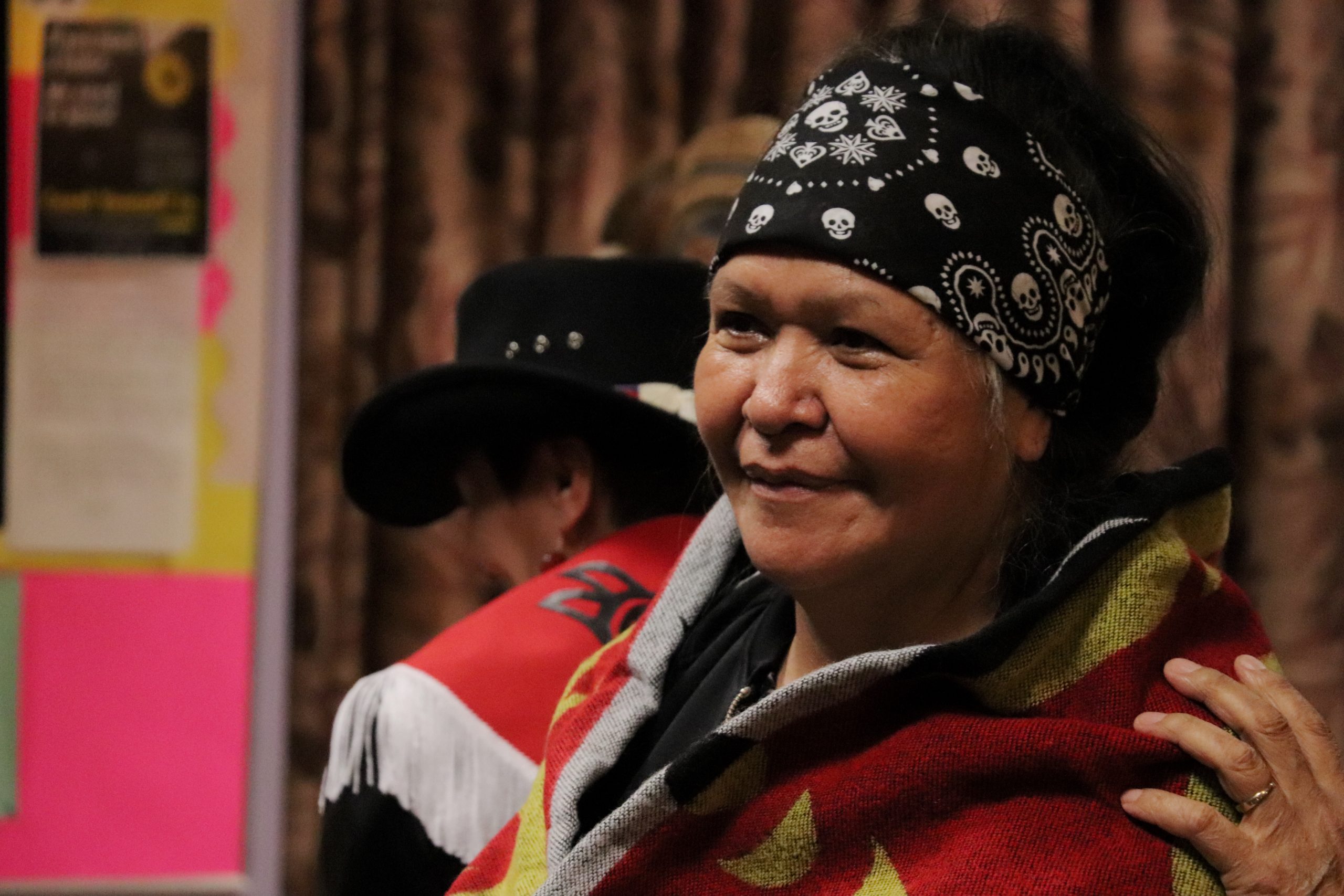
Last week the Downtown Eastside Women’s Centre released a 220-page report — Red Women Rising: Indigenous Women Survivors in Vancouver’s Downtown Eastside.
The report was co-authored by Carol Muree Martin and Harsha Walia, and it documents more than 100 stories and recommendations from Indigneous women, grounded in “powerful first-hand realities of violence, residential schools, colonization, land, resource extraction, family trauma, poverty, labour, housing, child welfare, being two-spirit, police, prisons, legal system, opioid crisis, healthcare, and more.”
On April 4, many of these women and their supporters gathered at the Downtown Eastside Women’s Centre for a special blanketing ceremony.
“Women from our community have gone through some good times, bad times. But look, we’re all still here,” said Martin, who had just returned from Ottawa, where she’d presented the report.
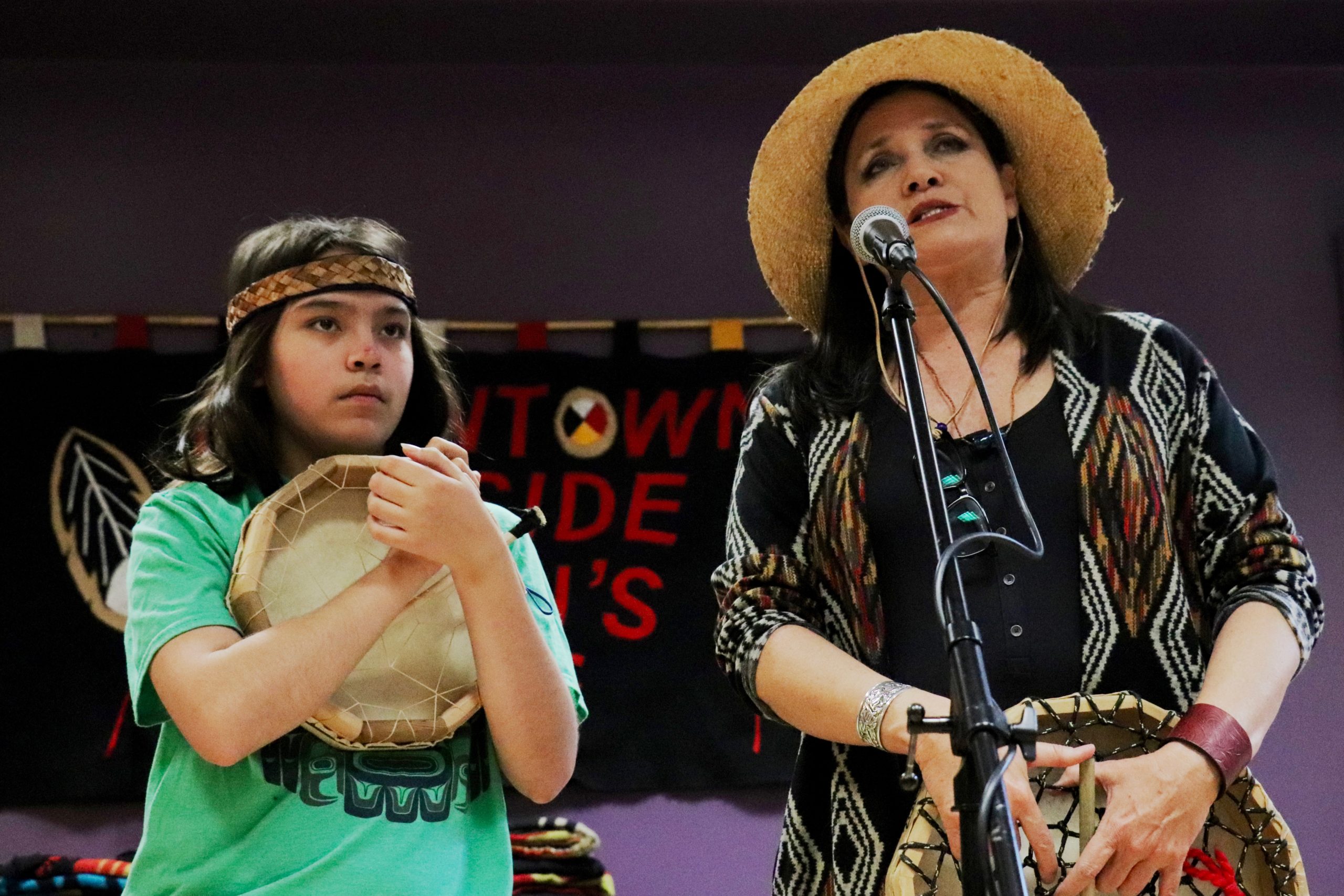
During the opening of the ceremony, Musqueam First Nation member Cecilia Point spoke about the cultural significance of blanketing for her community — how traditionally they’d spend months making blankets out of wild dog fur, and how today it remains a great honour to be blanketed.
“They’re our respected ones,” she said, standing alongside her son. “We are not just numbers on a paper. We are not chalk outlines. We are humans.”
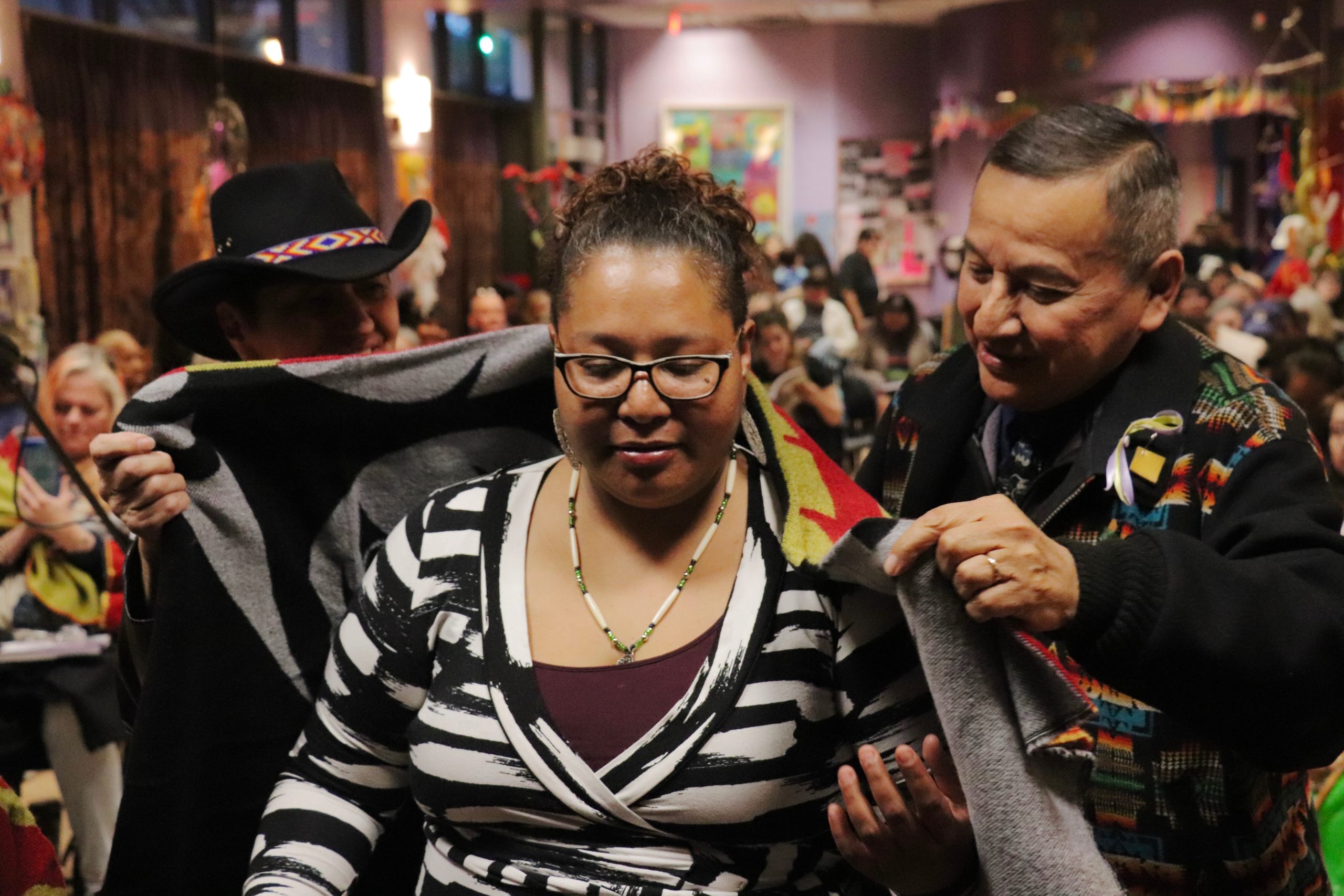
Grand Chief Stewart Phillip and his wife Joan blanketed dozens of women over the course of the evening, acknowledging their unique contributions to the report, which, as the Globe and Mail reported on April 3, “aims to dispel harmful and pervasive stereotypes while ‘shifting the lens from pathologizing poverty toward amplifying resistance to, and healing from, all forms of gendered colonial violence.’”
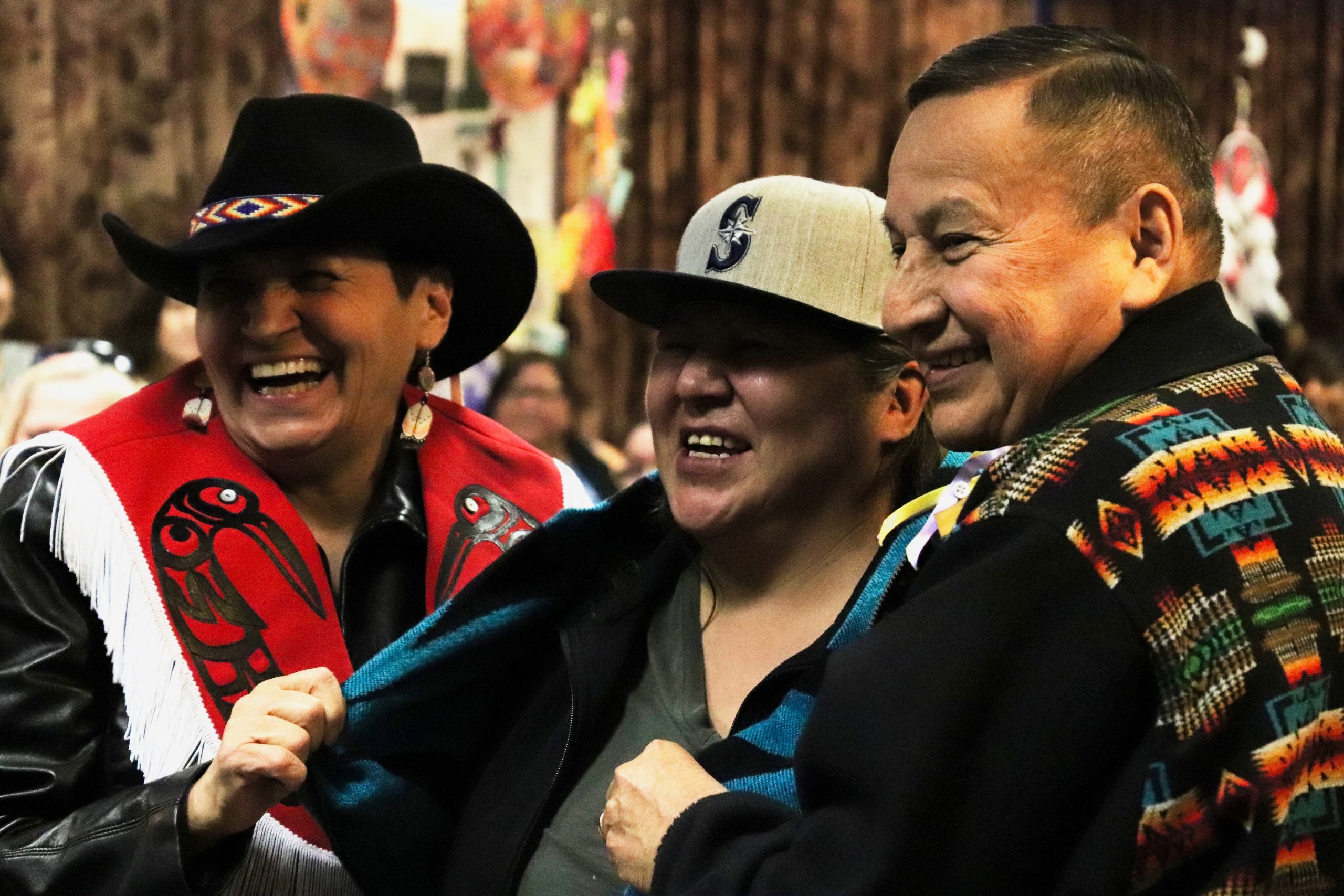
Some women cried as they were wrapped in the colourful blankets. Others came running up the aisle when their names were called, laughing while the crowd cheered.

Myrna Cranmer served as a witness during the ceremony. She’s one of the main organizers behind the Women’s Memorial March, which is held every year in Vancouver on Feb. 14 to honour Missing and Murdered Indigenous Women and Girls. “I know all the women who were blanketed. And it’s usually my job to write down the names of all the women who have died.”
“I hate the word survived,” she said. “You know, you warriored through.”
People are talking about
-
- In this CBC story, artwork created by former residential school students while they were in school is being displayed the Museum of Vancouver. The museum’s curator of Indigenous collections says the exhibit is part of the museum’s mandate of reconciliation.
-
In this Saskatoon Star Phoenix opinion column, Indigenous journalist Doug Cuthand says Jody Wilson-Raybould “is now a household name and a hero, especially among young women” in the Indigenous community.
-
The Surrey Now-Leader reports that the Métis Women of BC is getting nearly $200,000 in federal funding to support leadership training and expand their governance capacity.
- APTN reports that the Newfoundland and Labrador Court of Appeal has ruled in favour of reporter Justin Brake, who now works with APTN. Brake was covering an Indigenous protest over a hydroelectric project in Muskrat Falls in 2016 when he was named in an injunction taken out by the company against protestors. The company neglected to mention Brake was a journalist.
Justine’s child-protection trial
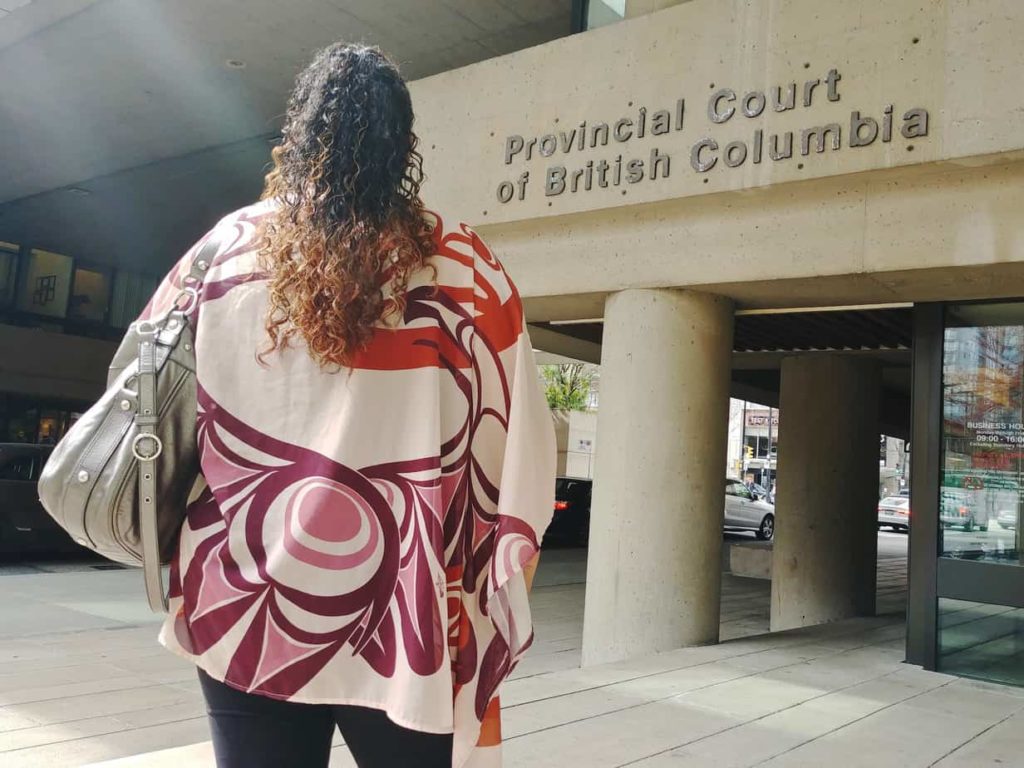
This Siksika mom has been fighting to get her daughters out of care since 2016. “I want to be heard,” she says. Last week things took an interesting turn in court, after “Justine” (whose real name we’re withholding to protect her kids’ identities) suggested her case be transferred to the Aboriginal Family Healing Court, a pilot project in New Westminster.
While the Siksika mom didn’t exactly get her wish, her request for a more collaborative approach including Elders had an important impact on her child-protection trial. After more than a year before the court, the judge called for a special conference modelled after the Aboriginal court.
While Justine’s family may not be able to access the pilot project’s resources, this case can still strive to incorporate “some of that structure, some of the philosophies and approaches,” Judge Lynsday Smith said.
Betty Kao-Lin, the acting executive director for Métis Family Services in Surrey, says she’s encouraged by the court’s response.
“This is fabulous,” she wrote in an email to The Discourse. “They’re doing this in Victoria too. They should have this available for all FN, Métis and Inuit families!!”
People shared feedback on Facebook, too:

Let’s gather
-
April 10: Raven People Rising: An Evening with Heiltsuk Coast Protectors presents a documentary screening and panel discussion at 7 p.m. at the SFU Goldcorp Centre for the Arts, led by Megan Humchitt from the Heiltsuk Tribal Council. The film, Raven People Rising, shows the Heiltsuk Nation’s experience with the Nathan E. Stewart oil spill of 2016. By-donation tickets can be found here.
-
April 10: Finale Celebration: Joseph A. Dandurand is an event put on by the Vancouver Public Library to honour Joseph’s time as the Indigenous storyteller in residence. The free Central Library branch event will run from 7 to 8:30 p.m. and will feature poet and filmmaker Jules Koostachin, author Nicola Campbell, and other poets and performers.
-
April 10 to Oct. 2: The ReMatriate Collective puts on qaʔ yəxʷ – water honours us: womxn and waterways at the Bill Reid Gallery. The exhibit will explore the connectivity between matriarchal societies in the Northwest Coast and water, with pieces focusing on child-bearers, healers and doulas.
-
April 13: Indigenous health worker Jennifer Dehoney leads an Indigenous Cultural Safety Training Workshop at Mom2Mom from 9 a.m. to noon. The free event will cover “cultural safety, terminology, history of colonization, stories of Indigenous experience, how to deal with guilt and more.” You can find more information and register here.
If you know about an event that you think should be included in this newsletter next week, send me an email.
And if you like this newsletter, help us build this community by inviting your friends to subscribe. We value your feedback.[end]


